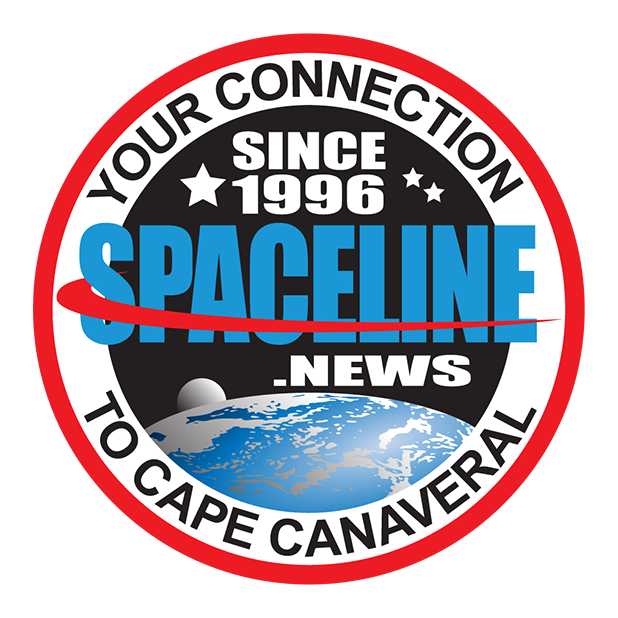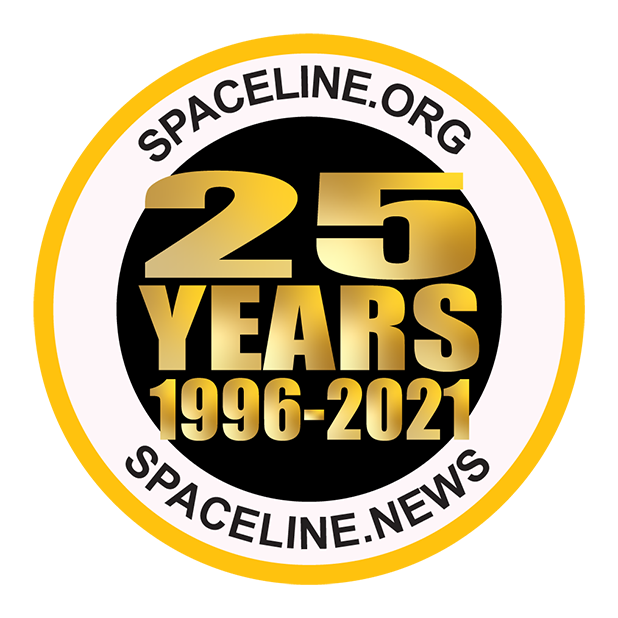Spaceline News Archives
August 2022
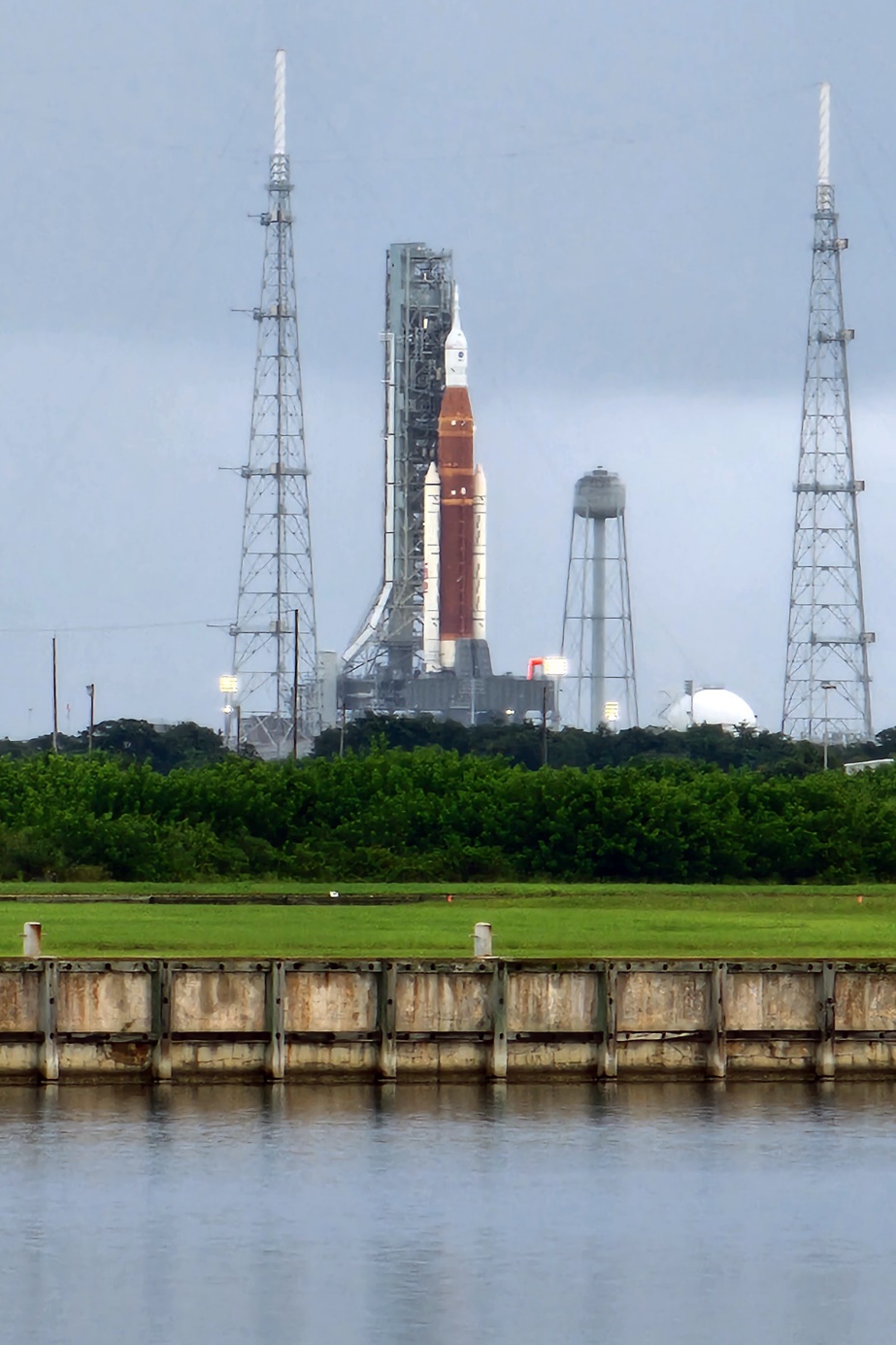
SLS On Launch Pad 39B, Photo Courtesy Carleton Bailie/Spaceline
Space Launch System Artemis-I Launch Scrubbed
August 29, 2022 | Reported by Cliff Lethbridge
Today's scheduled launch of a Space Launch System (SLS) rocket on the Artemis-I mission from Launch Pad 39B at the Kennedy Space Center has been scrubbed. Launch had been set for 8:33 a.m. EDT at the start of a two-hour launch window, but the launch was scrubbed at 8:35 a.m. EDT during a hold at the T-minus 40 minute mark in the countdown. There was an indication that the rocket's Engine Number 3, one of four RS-25 engines that provide power to the rocket, had not properly chilled down to allow the flow of cryogenic liquid fuel to the engine. It was believed that a shortage of liquid hydrogen bleed to the engine was the cause of the problem, but it was ultimately discovered that the engine had a faulty temperature sensor, and that the engine was in actuality at the proper temperature to support a launch. Launch has been rescheduled for September 3, 2022 at 2:17 p.m. EDT with a two-hour launch window. Artemis-I will be an unmanned test flight of an Orion spacecraft around the Moon.
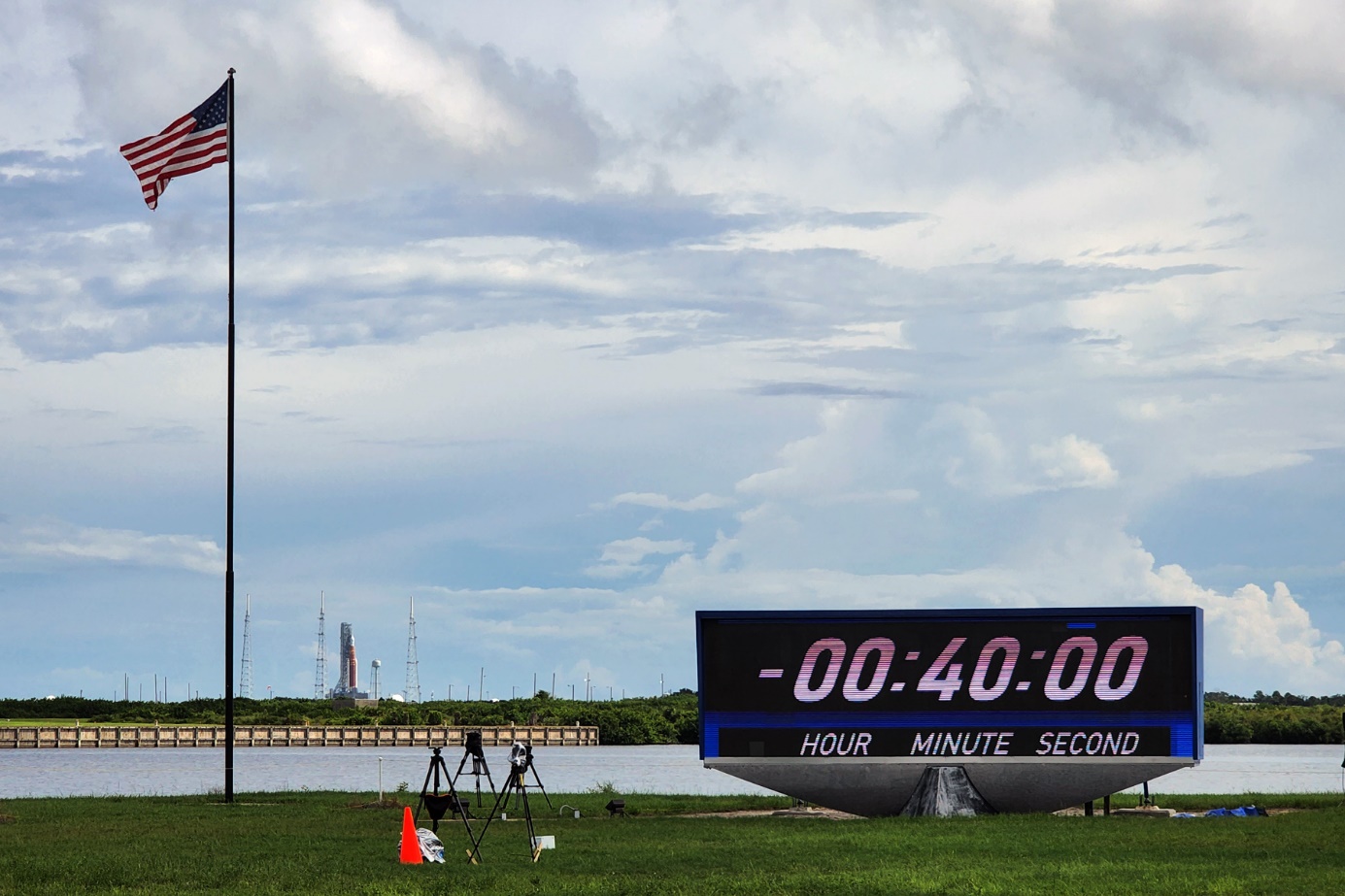
Launch Complex 39 Press Site, Photo Courtesy Carleton Bailie/Spaceline
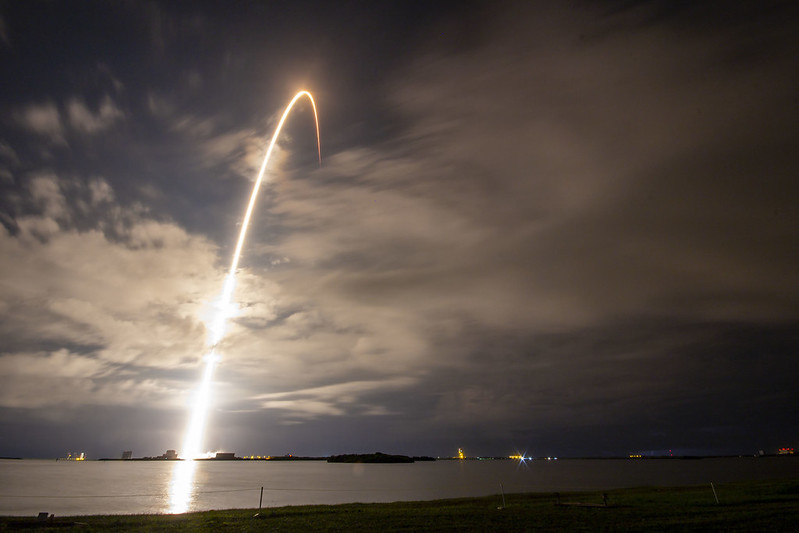
Falcon 9 Starlink 4-23 Launch, Photo Courtesy SpaceX
Falcon 9 Launches 54 Starlink Satellites
August 27, 2022 | Reported by Cliff Lethbridge
A SpaceX Falcon 9 rocket successfully launched 54 Starlink satellites at 11:41 p.m. EDT today from Launch Pad 40 on Cape Canaveral Space Force Station. Launch was postponed from 10:22 p.m. EDT today due to bad weather at the launch site. The first stage booster employed today was being flown for the second time, having previously supported the CRS-24 mission. The booster was successfully recovered today with a landing on the "A Shortfall of Gravitas" drone ship, positioned on the Atlantic Ocean about 400 miles northeast of Cape Canaveral. The mission, designated Starlink 4-23, brings to a total of 3,162 Starlink satellites launched to date, although not all of these are operational or still in orbit. At a total weight of 36,800 pounds, today's payload marked the heaviest ever launched aboard a Falcon 9. Starlink is a SpaceX-owned and operated constellation of broadband Internet satellites, intended to provide space-based Internet service to users worldwide.
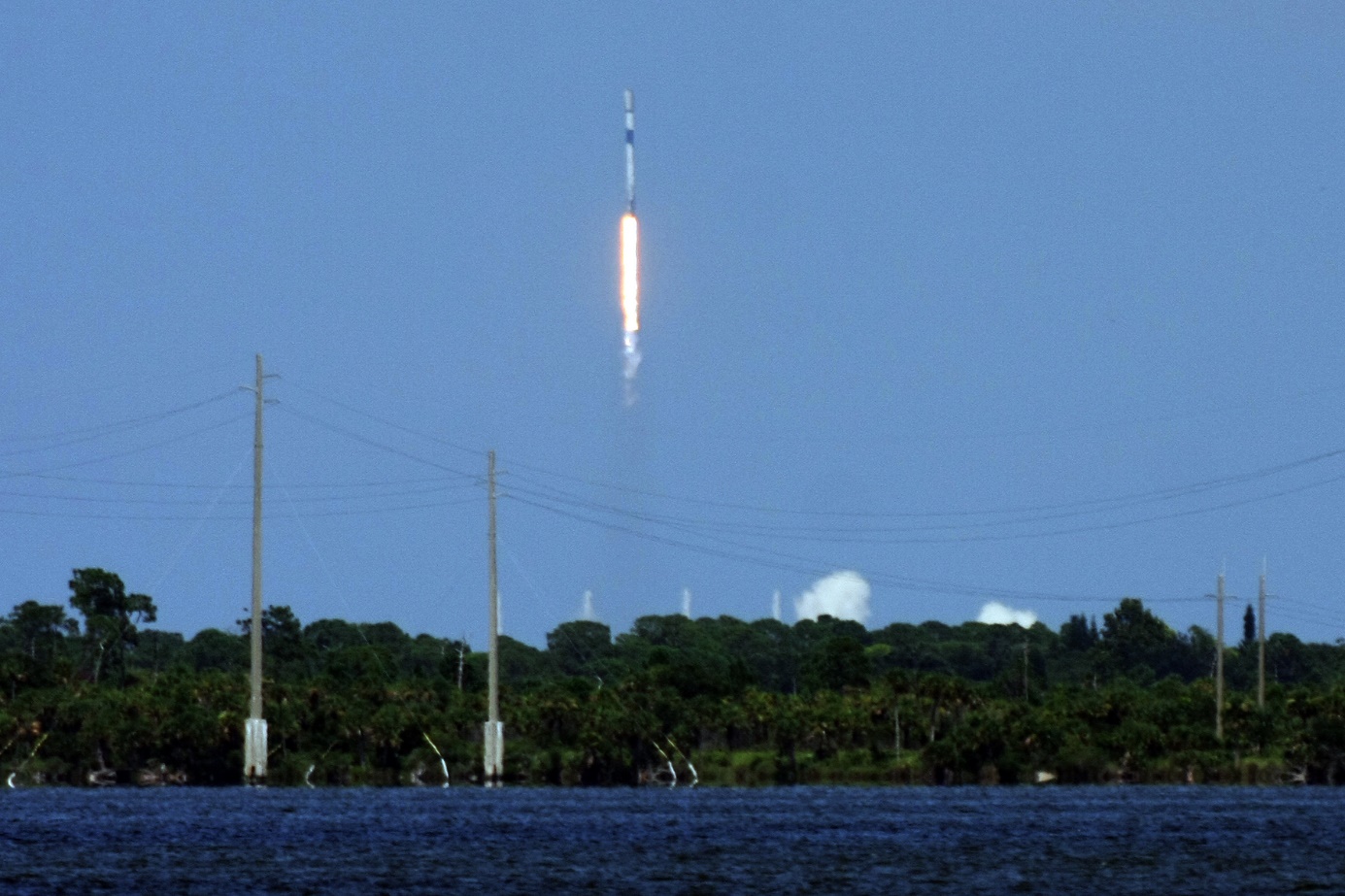
Falcon 9 Starlink 4-27 Launch, Photo Courtesy Carleton Bailie/Spaceline
Falcon 9 Launches 53 Starlink Satellites
August 19, 2022 | Reported by Cliff Lethbridge
A SpaceX Falcon 9 rocket successfully launched 53 Starlink satellites at 3:21 p.m. EDT today from Launch Pad 40 on Cape Canaveral Space Force Station. The first stage booster employed today was being flown for the ninth time, having previously supported the GPS III-SV04, GPS III-SV05, Inspiration4, Axiom-1, Nilesat-301 and three Starlink missions. The booster was successfully recovered today with a landing on the "A Shortfall of Gravitas" drone ship positioned on the Atlantic Ocean about 400 miles northeast of Cape Canaveral. The mission, designated Starlink 4-27, brings to a total of 3,108 Starlink satellites launched to date, although not all of these are operational or still in orbit. Starlink is a SpaceX-owned and operated constellation of broadband Internet satellites intended to provide space-based Internet service to users worldwide.
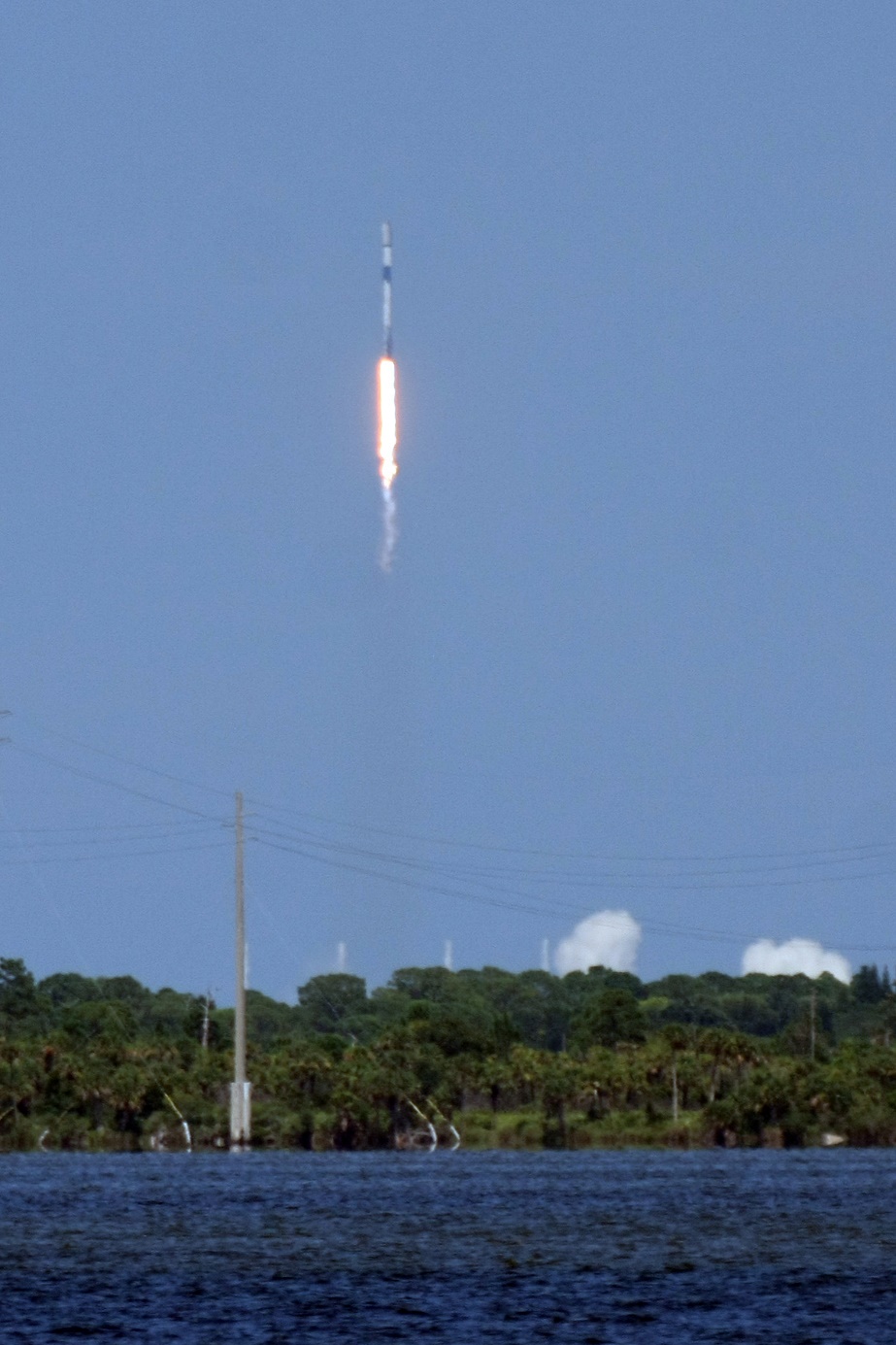
Falcon 9 Starlink 4-27 Launch, Photo Courtesy Carleton Bailie/Spaceline
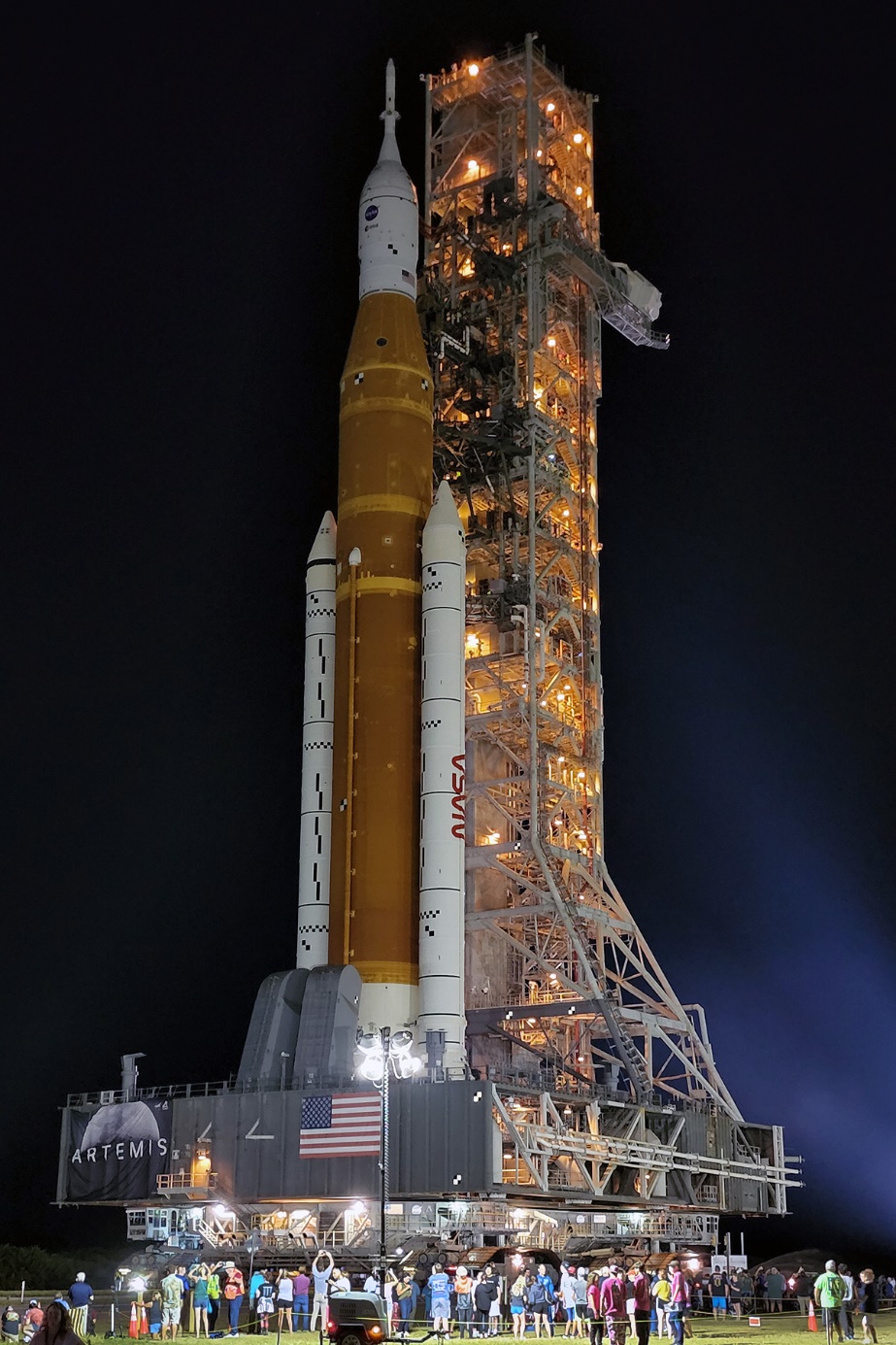
SLS Departs Vehicle Assembly Building, Photo Courtesy Carleton Bailie/Spaceline
SLS Artemis-1 Completes Rollout To Launch Pad 39B
August 17, 2022 | Reported by Cliff Lethbridge
The Space Launch System (SLS) rocket set to launch the Artemis-1 mission completed its rollout from the Vehicle Assembly Building (VAB) to Launch Pad 39B at 8:03 a.m. EDT today at the Kennedy Space Center. First motion from the VAB occurred at 9:55 p.m. EDT last night after a nearly one hour delay due to lightning in the vicinity. Total rollout time for the 4.2 mile journey was 10 hours, 8 minutes. This was the rocket's third, and hopefully final, trip to the launch pad, following rollouts in March, 2022 and June, 2022 for pre-launch testing. Artemis-1 will be an unmanned flight of the Orion spacecraft around the Moon. Launch is scheduled for no earlier than August 29, 2022 at 8:33 a.m. EDT with a two-hour launch window. There are also back-up launch opportunities on September 2, 2022 and September 5, 2022.
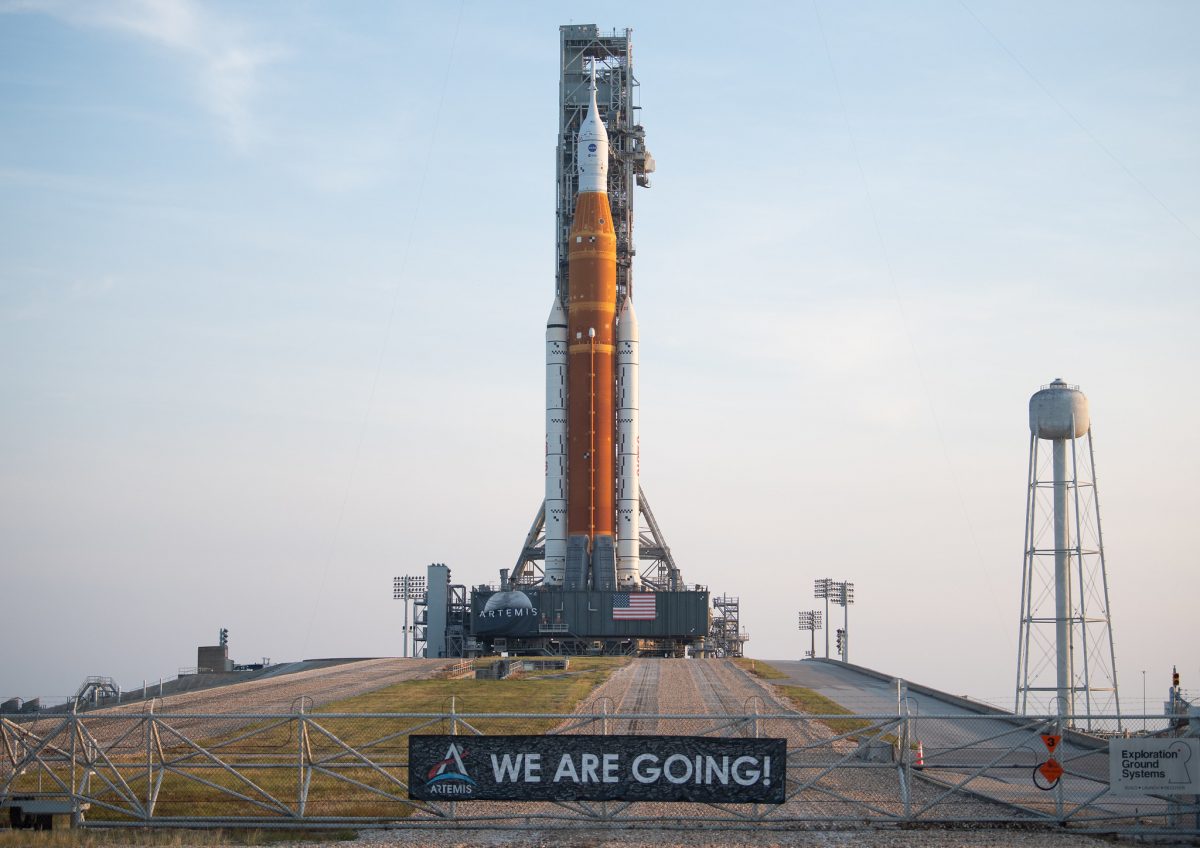
SLS On Launch Pad 39B, Photo Courtesy NASA
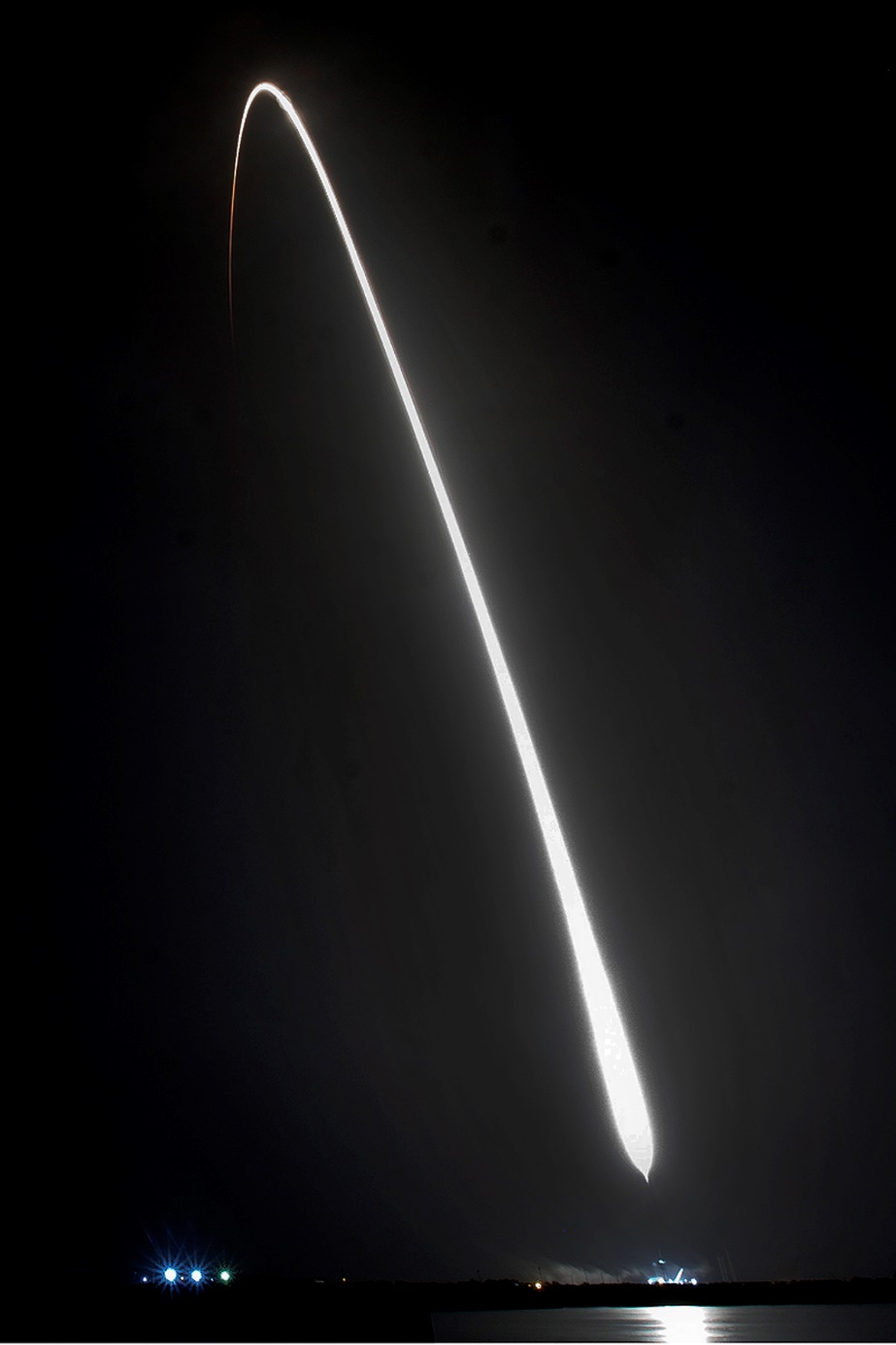
Falcon 9 Starlink 4-26 Streak Shot, Photo Courtesy Carleton Bailie/Spaceline
Falcon 9 Launches 52 Starlink Satellites
August 9, 2022 | Reported by Cliff Lethbridge
A SpaceX Falcon 9 rocket successfully launched 52 Starlink satellites at 10:14 p.m. EDT today from Launch Pad 39A at the Kennedy Space Center. Launch was delayed from 6:57 p.m. EDT today due to unacceptable upper altitude winds. The first stage booster employed today was being flown for the third time, having previously supported one Starlink and the SES-22 mission. The booster was successfully recovered today with a landing on the "A Shortfall of Gravitas" drone ship, positioned on the Atlantic Ocean about 400 miles northeast of Cape Canaveral. The mission, designated Starlink 4-26, brings to a total of 3,009 Starlink satellites launched to date, although not all of these are operational or still in orbit. Starlink is a SpaceX-owned and operated constellation of broadband Internet satellites intended to provide space-based Internet service to users worldwide.
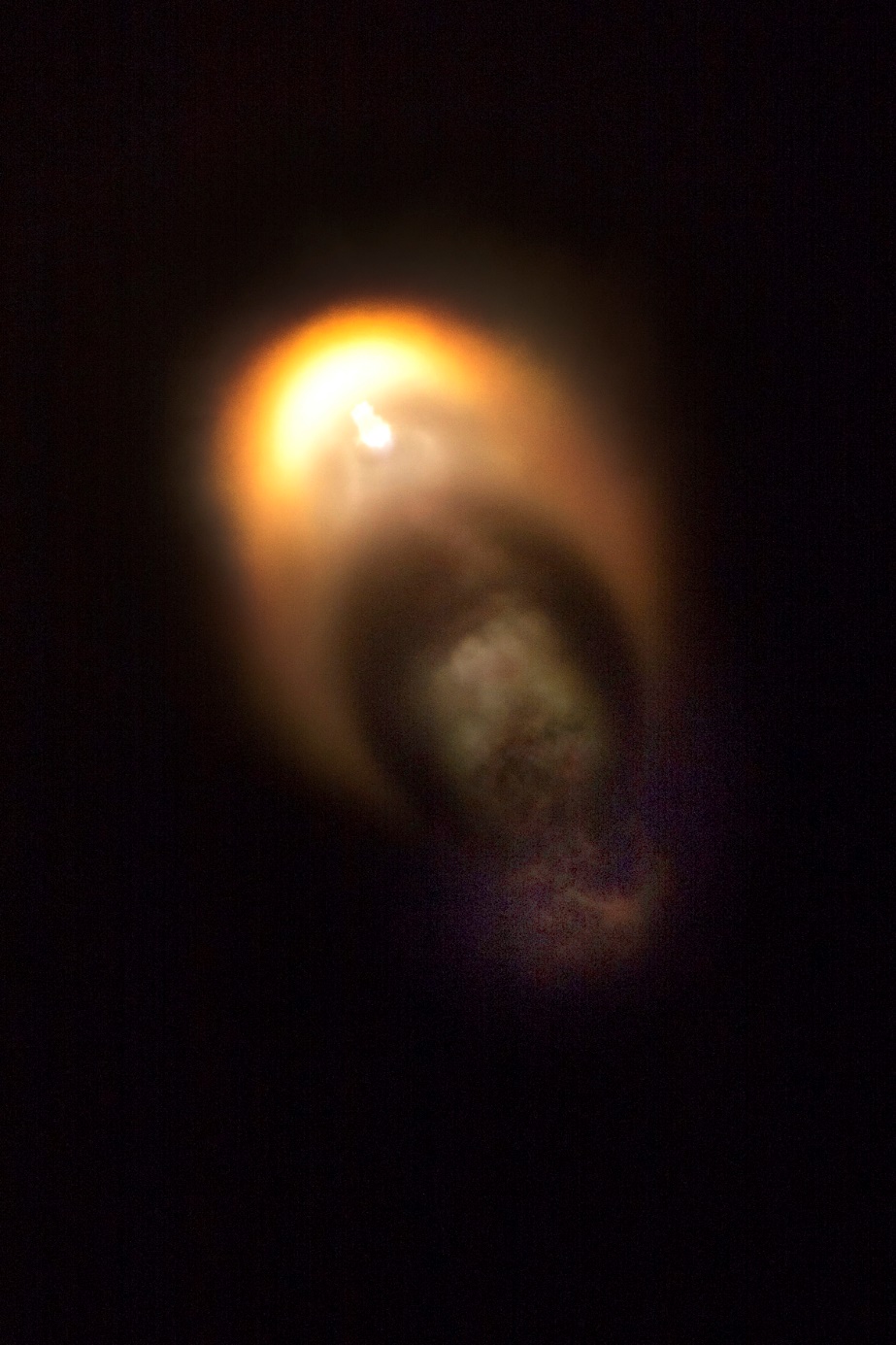
Falcon 9 Starlink 4-26 Downrange, Photo Courtesy Carleton Bailie/Spaceline
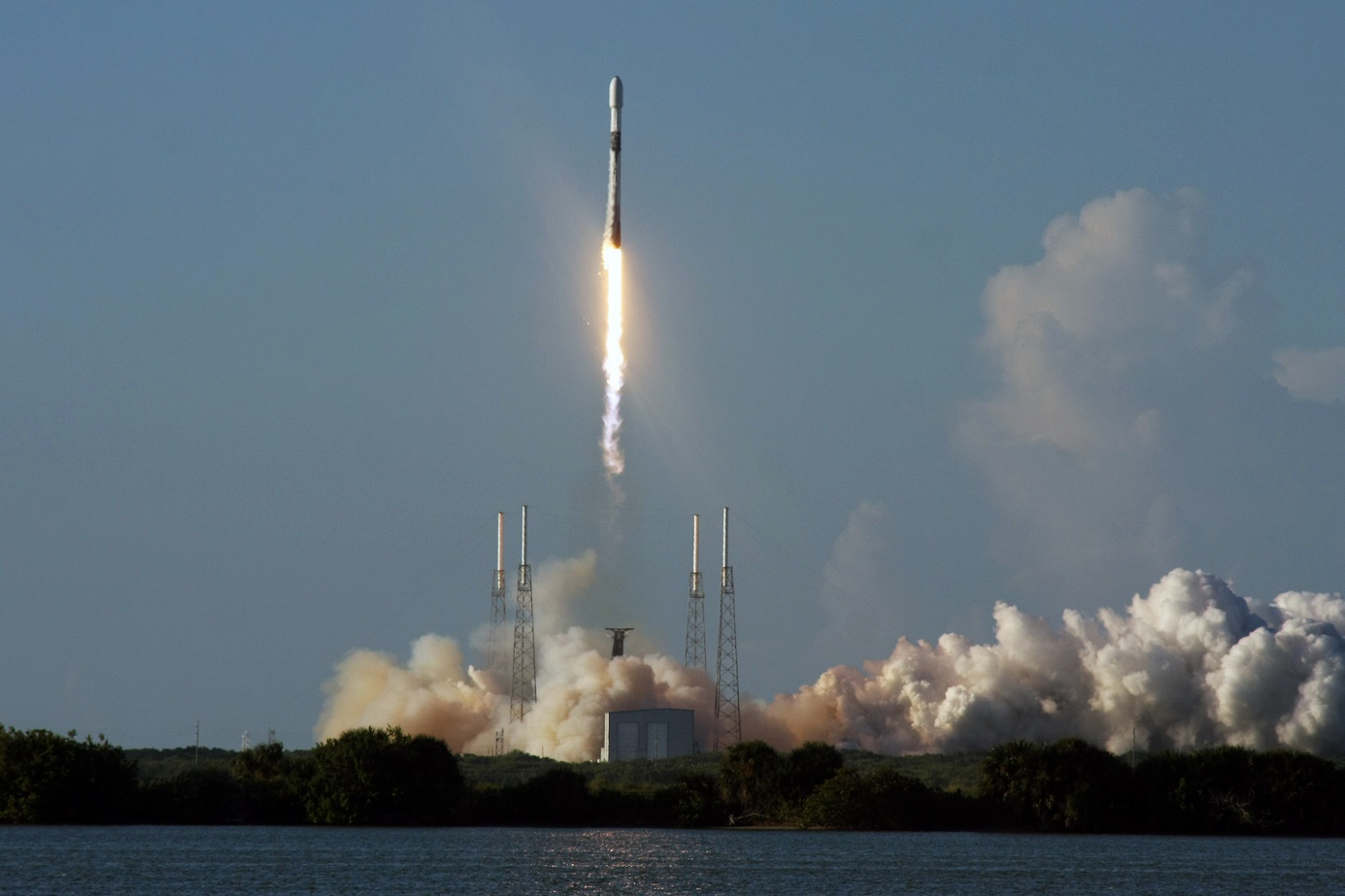
Falcon 9 KPLO Launch, Photo Courtesy Carleton Bailie/Spaceline
Falcon 9 Launches Korea Pathfinder Lunar Orbiter
August 4, 2022 | Reported by Cliff Lethbridge
A SpaceX Falcon 9 rocket successfully launched the Korea Pathfinder Lunar Orbiter (KPLO) for South Korea at 7:08 p.m. EDT today from Launch Pad 40 on Cape Canaveral Space Force Station. The first stage booster employed today was being flown for the sixth time, having previously supported the Arabsat-6A, STP-2, COSMO SkyMed FM-2 and two Starlink missions. The booster was successfully recovered today with a landing on the "Just Read the Instructions" drone ship positioned on the Atlantic Ocean about 400 miles east of Cape Canaveral. The 1,495-pound KPLO spacecraft carries six scientific payloads with objectives that include mapping the lunar surface, detecting water ice on the Moon and analyzing the radiation environment near the Moon. If all goes according to plan, KPLO will enter a circular, low-altitude polar orbit around the Moon on December 31, 2022. The spacecraft should orbit the Moon at an altitude of about 60 miles.
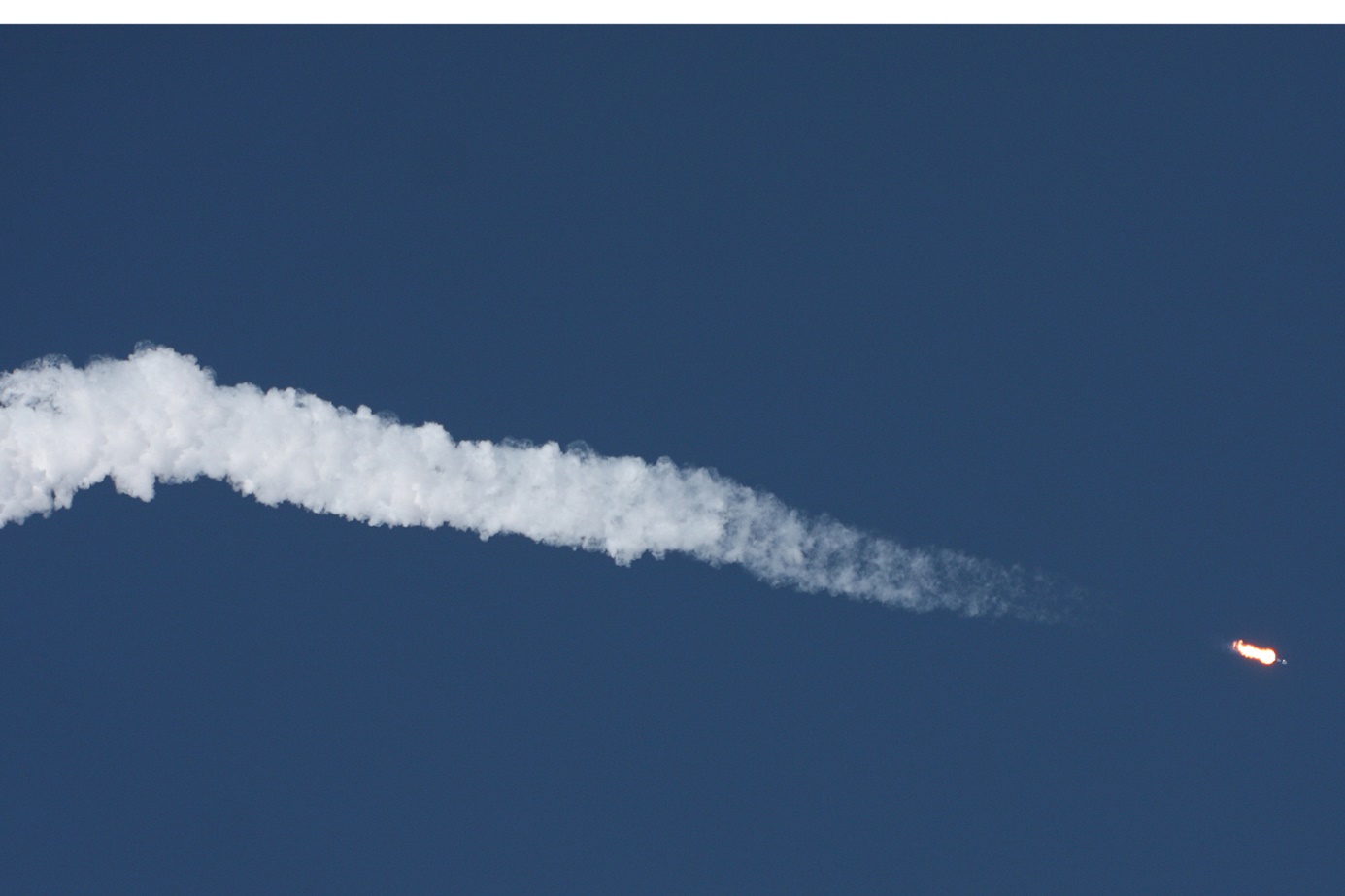
Falcon 9 KPLO Downrange, Photo Courtesy Carleton Bailie/Spaceline
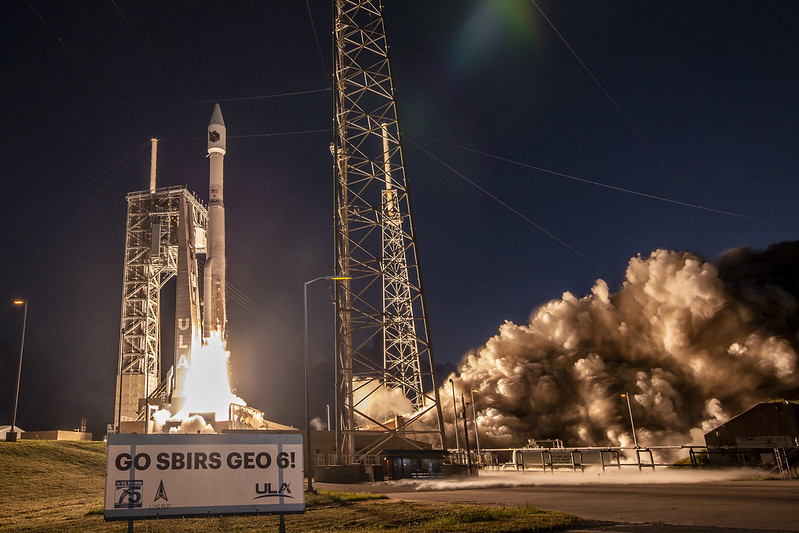
Atlas V SBIRS GEO-6 Launch, Photo Courtesy United Launch Alliance
Atlas V Launches SBIRS GEO Flight 6 Satellite
August 4, 2022 | Reported by Cliff Lethbridge
A United Launch Alliance Atlas V rocket successfully launched the SBIRS GEO Flight 6 satellite at 6:29 a.m. EDT today from Launch Pad 41 on Cape Canaveral Space Force Station. The Atlas V launched today was being flown in the 421 configuration, featuring a four-meter payload fairing, two solid rocket boosters and a single-engine Centaur second stage. The 10,700-pound satellite was successfully deployed in a geostationary transfer orbit and will ultimately be positioned about 22,000 miles above Earth. The SBIRS GEO Flight 6 (Space Based Infrared System Geostationary Earth Orbit Flight 6) is a satellite deployed for the U.S. Space Force Space and Missiles Systems Center (SMC). The SBIRS constellation uses infrared surveillance to provide early warning for the U.S. military and is considered one of the nation's highest priority space programs. The system includes a combination of satellites and hosted payloads in Geosynchronous Earth Orbit (GEO) and Highly Elliptical Orbit (HEO) plus ground hardware and software. The constellation is primarily dedicated to missile defense, battlespace awareness, missile warning and technical intelligence. SBIRS employs powerful overhead sensors that are capable of providing large amounts of data and is intended to support 24/7 tactical alerts. SBIRS GEO Flight 6 has a design life of about 12 years and is the final and most advanced satellite version in the SBIRS series.
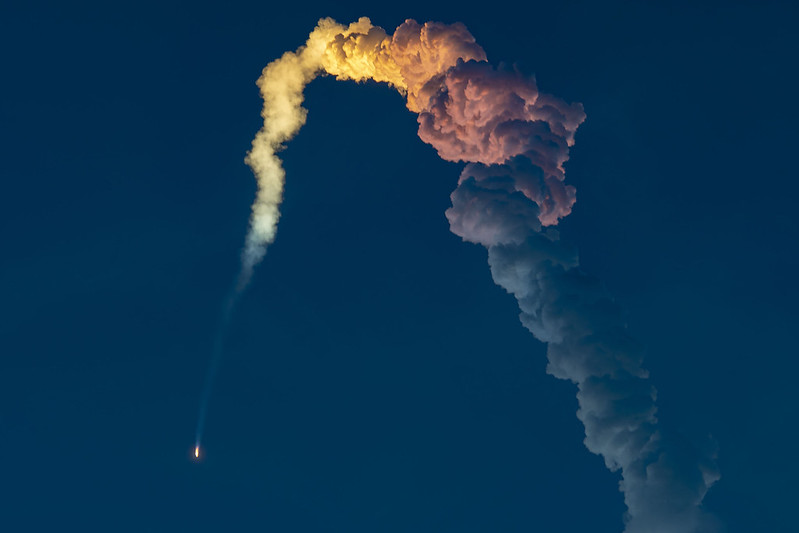
Atlas V SBIRS GEO-6 Launch, Photo Courtesy United Launch Alliance


